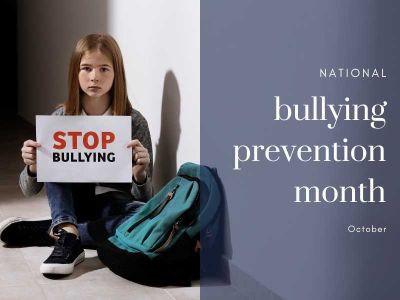Oct 3rd, 2022
In October, the Cape Girardeau County Public Health Center aims to raise awareness on bullying for National Bullying Prevention Month.
According to youth.gov, bullying is "unwanted, aggressive behavior among school-aged children that involves a real or perceived power imbalance". It includes actions such as making threats, spreading rumors, attacking someone physically or verbally, and excluding someone from a group on purpose. With the use of technology, cyberbullying, can include offensive text messages or emails, rumors sent by email or posted on social networking sites, and embarrassing pictures, videos, websites, or fake profiles.
One out of every five (20.2%) students report being bullied.
The reasons for being bullied reported most often by students include physical appearance, race/ethnicity, gender, disability, religion, sexual orientation.
-National Center of Educational Statistics, 2019
Circle of Bullying Roles
Which role does your child fill?
The roles kids play in bullying are not limited to those who bully others and those who are bullied. A circle of bullying, as defined by researchers, include both those directly involved in bullying and those who actively or passively assist the behavior or defend against it. Where does your child fall?
- Kids who bully
- Kids who are bullied
- Kids who assist (children who are bullying)
- Kids who reinforce (by giving bullying an audience)
- Outsiders (remain separate and neither reinforce or defend)
- Kids who defend (actively comfort bullying victims and may come to their defense)
Most kids play more than one role in bullying over time and every situation is different. To learn more about the roles kids play in bullying, click here.
Bullying is considered an Adverse Childhood Experience (ACE). ACEs are potentially traumatic events that can have negative, lasting effects on a person's development, the way they interact with others, and how they perform in school.
Among the serious consequences of bullying, there is also a connection between trauma and bullying. Every individual is different and incidents that traumatize one person may not affect another. However, the National Child Traumatic Stress Network (NCTSN) suggests that children or teens who have been exposed to trauma and violence may be more likely to bully others or be bullied. So, how can we take action against bullying?
Prevention Methods
Which role do you fill?
Parents, school staff, and other caring adults have a role to play in preventing bullying. Helping children build resilience has lasting effects. Other ways that you can help include:
- Help kids understand bullying. Talk about what bullying is and how to stand up to it safely. Tell kids bullying is unacceptable and make sure they know how to get help.
- Keep the lines of communication open. Check in with kids often. Listen to them. Know their friends, ask about school, and understand their concerns. Talking about bullying directly is an important step in understanding how the issue might be affecting kids.
- Encourage kids to do what they love. Special activities, interests, and hobbies can boost confidence, help kids make friends, and protect them from bullying behavior.
- Model how to treat others. Kids learn from adults’ actions, even when it seems like they are not paying attention. By treating others with kindness and respect, adults show the kids in their lives how they manage stress and conflict. How they treat their friends, colleagues, and families also shows that there is no place for bullying.
To learn more about how adults can help to prevent bullying among children, click here.
As cases of bullying have risen, so have resources and attention. This month and every month is a great time to consider how you can help raise awareness about bullying and take actions to stop it. Together, we can keep our communities safe and nurture a sense of belonging for every child and family in Cape Girardeau County.
Sources: Pacer's National Bullying Prevention Center (pacer.org), stopbullying.gov, and youth.gov

